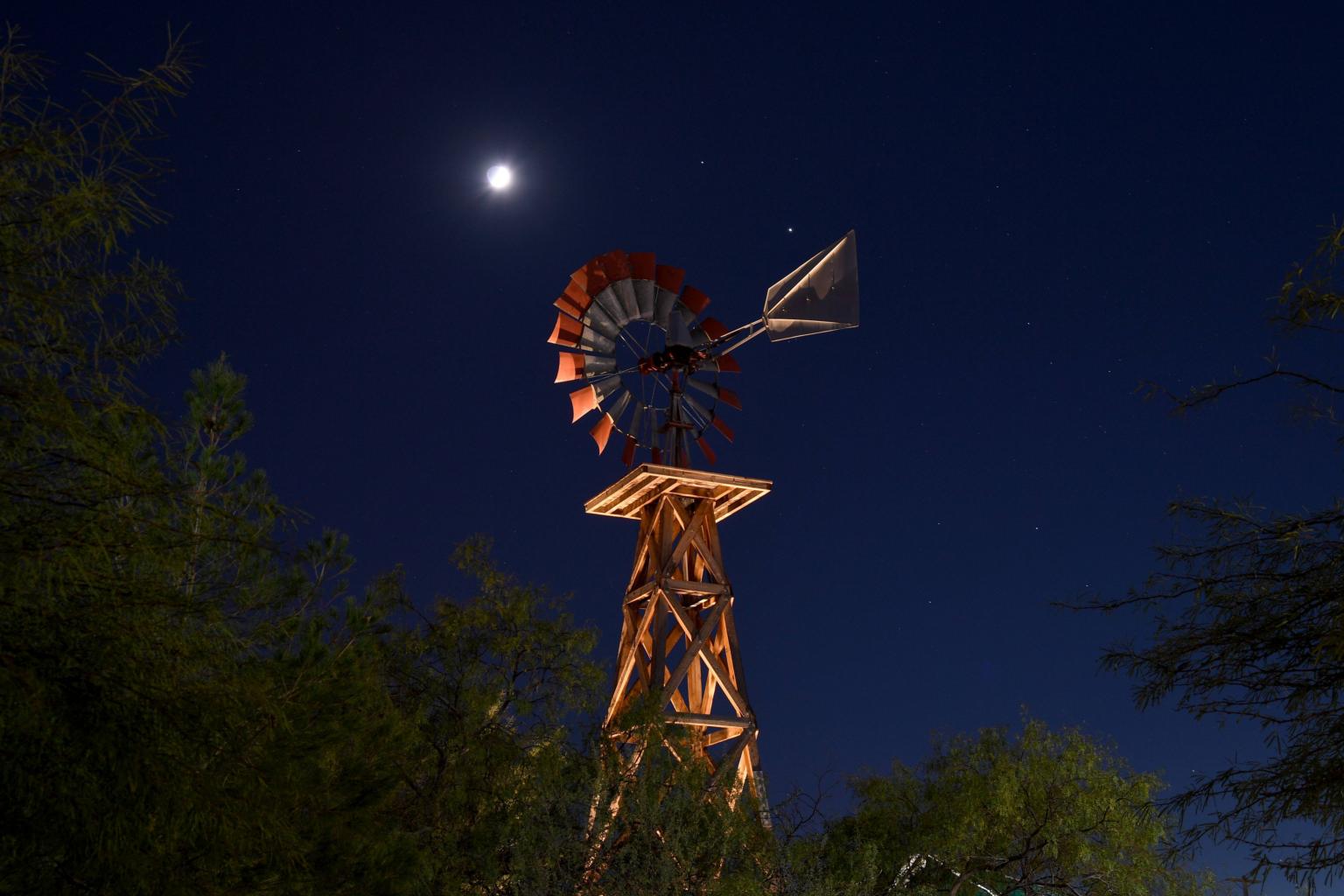Jupiter and Saturn head for closest visible alignment in 800 years
Sign up now: Get ST's newsletters delivered to your inbox

(From left) The waxing crescent moon, Saturn and Jupiter seen at Western Trails Park in Las Vegas on Nov 19, 2020.
PHOTO: AFP
Follow topic:
NEW YORK (NYTIMES) - For months, Saturn and Jupiter have appeared to be courting, as the giant celestial bodies have gradually drawn nearer in the night sky.
Over the next two weeks, as their orbits align more closely, the planets will pull closer until they appear to be just a tenth of a degree apart - about the thickness of a dime held at arm's length, according to Nasa.
The encounter, known as a great conjunction, happens about every 20 years. But this one - arriving Dec 21, the winter solstice - is special, astronomers said.
It will be the closest alignment of Saturn and Jupiter, the largest planets in our solar system, since 1623.
But that conjunction, just 14 years after Galileo built his first telescope, was 13 degrees away from the sun, making it almost impossible to view from Earth, said Ms Amy Oliver, a spokeswoman for the Centre for Astrophysics, Harvard & Smithsonian.
This one will be the closest visible encounter between the two giants since the Middle Ages, in 1226, Ms Oliver said. The next time the planets will be this close is 2080, she said, making the event a once-in-a-lifetime spectacle for most adults.
Across the United States, the best view of the two planets coming into near-alignment will be just after sunset, in the south-western portion of the sky.
"It's a very elegant astronomical event to watch in the night sky," said Professor Renu Malhotra, a planetary sciences expert at the University of Arizona. "It's a very romantic event to see these planets approaching each other."
Although best appreciated with binoculars or a telescope, the encounter should be visible to the naked eye.
Prof Konstantin Batygin of planetary science at the California Institute of Technology, said he had been watching Jupiter, his favourite planet, and Saturn draw closer to one another on nightly walks with his pit bull, Bagheera.
"It's the rare astronomical event where you can appreciate the motion of the planets around the sun without being some kind of astronomer," Prof Batygin said.
"You can still go outside close to Christmas and say, 'Wow, those two planets sure are close to one another, and they aren't usually.' It's one of these rare times when the majesty of the solar system presents itself to the naked eye."
But such encounters were not always viewed so lyrically. In ancient times, people considered planetary alignments to be bad omens, portending calamity, Prof Malhotra said.
"There was reason to fear that the gods were conspiring when they got closer in the night sky," she said. "It might have ominous meaning to people on Earth."
The conjunction is the result of the orbital paths of Jupiter and Saturn coming into line, as viewed from Earth. Jupiter orbits the sun about every 12 years, and Saturn about every 29 years.
Although they will appear to be close together - resembling a bright ball or a tipped-over snowman in the sky, Ms Oliver said - the planets will not actually be that close. In fact, they will be more than 400 million miles apart, she said.
"Jupiter and Saturn will appear as two wandering stars that are kind of right on top of one another," Prof Batygin said. "If you wait long enough, it's bound to happen, because their orbital paths intersect. But it doesn't happen that often."
Some people are calling the conjunction a Christmas star because of its arrival around the holiday.
Ms Oliver said that on the days before and after Dec 21, "as soon as it gets dark outside, everybody should go outside and take a look."
"For most adults, this is your one big opportunity to see this," she said. "Really young kids might get another chance. For the rest of us, it's now or never."

